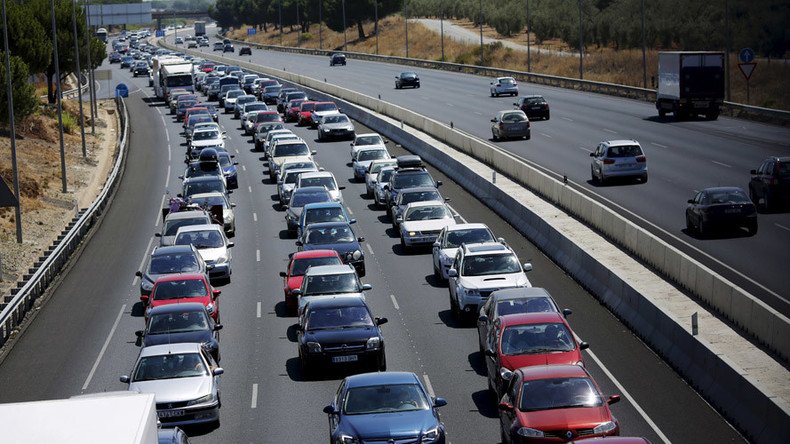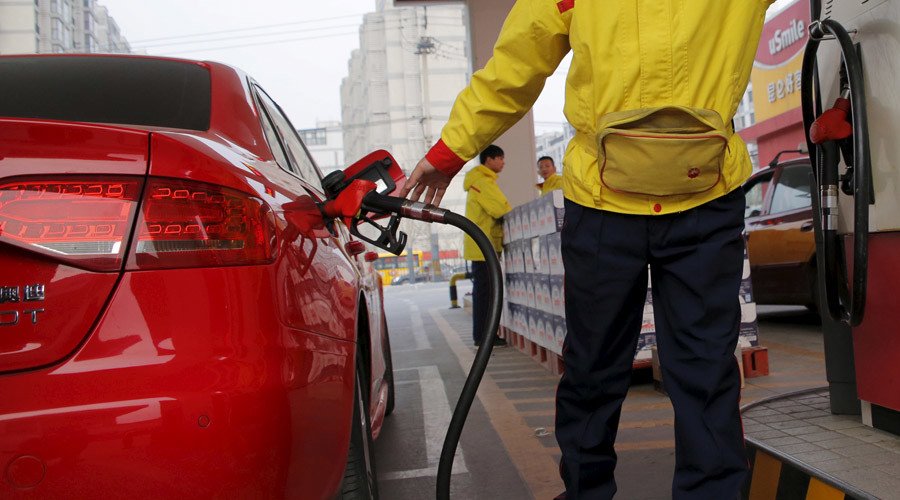Greedy guzzlers: US gasoline consumption higher than ever

August was the biggest month ever for US gasoline consumption, the latest data shows, with Americans using a staggering 9.7 million barrels per day. That’s more than a gallon per day for every US man, woman and child.
This new spike comes despite government pledges to cut down on gasoline consumption. In 2012, the government's official source of energy data, the Energy Information Administration, projected that gasoline consumption would steadily decline by around 7 percent over the next 25 years. This view was shared by energy expert Daniel Yergin who also said in 2012, “The US has already reached what we can call`peak demand.”

Their forecasts appeared sound; US gasoline consumption had declined for five years in a row as of 2012, when it was a million barrels per day below its July 2007 peak.
President Obama also announced aggressive new fuel economy standards in 2012 that would push average vehicle fuel economy to 54 miles per gallon.
Fast forward to 2016, and US gasoline consumption has increased steadily four years in a row, hitting a new peak.
US gasoline consumption is now at an all-time high — the last peak was nearly a decade ago: https://t.co/9ZZWnpE9rypic.twitter.com/8G6dseSHVq
— brad plumer (@bradplumer) September 27, 2016
Lucas Davis, Associate Professor at the University of California, Berkeley, constructed data using statistics from the US Department of Energy, and said this dramatic spike has important consequences for petroleum markets, the environment and the US economy.
Davis explained how this happened, “With incomes increasing again and low gasoline prices, Americans are back to buying big cars and driving more miles than ever before.”
US crude #oil stocks declined for fourth straight week while #gasoline stocks increased. More on EIA data https://t.co/Ppk3n3wxq7
— Platts Oil (@PlattsOil) September 29, 2016
Davis pointed out that the slowdown in US gasoline consumption between 2007 and 2012 occurred during the worst global recession since World War II. The National Bureau of Economic Research dates the Great Recession as beginning December 2007, exactly at the beginning of the slowdown in gasoline consumption.
US GASOLINE CONSUMPTION in Jun 2016 exceeded previous peak set in Jun 2007 by +173,000 b/d
— John Kemp (@JKempEnergy) September 1, 2016
Davis said that economists have shown through studies that when people have more to spend, gasoline consumption goes up. During the Great Recession, Americans traded in their vehicles for more fuel-efficient models, and drove fewer miles. But now, with incomes on the rise, Americans are buying bigger vehicles with bigger engines, and driving more total miles.
The other important explanation, Davis says is gasoline prices. During the first half of 2008, gasoline prices increased sharply. However, in the last few months of 2014, gasoline prices plummeted and it appears Americans have been on a gasoline buying frenzy ever since.

Another factor, is that last year was the biggest year ever for US vehicle sales, with trucks and SUVs leading the charge. With the average retail price for gas at $2.24 per gallon on August 29, 2016, the lowest Labor Day price in 12 years. No wonder Americans are driving more.
EVs Will Reduce US Gasoline Demand by 300,000 Barrels per Day by 2035 https://t.co/r9UfG0S9d1 GTM says a 4% reduction, 19 years from now.
— Severin Borenstein (@BorensteinS) September 28, 2016
It’s predicted that Americans will drive 3.2 trillion miles in 2016, more miles than ever before. Why wouldn’t they? Gas is cheap!












